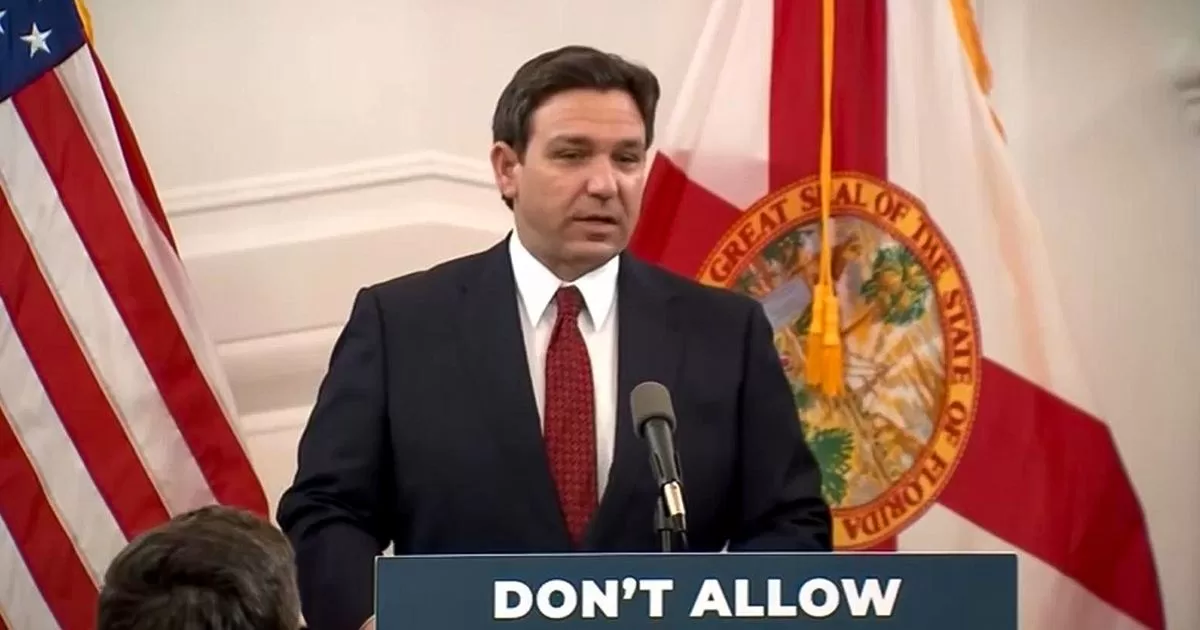MIAMI.- Florida Governor Ron DeSantis signed HB 1565, which lifts the expiration of Florida’s red tide mitigation and technology development initiative and directs the Department of Environmental Protection (DEP), the Fish and Wildlife Conservation Commission Florida Wildlife and the Marine Laboratory continue to coordinate efforts to innovate technologies to address the impacts of red tide in Florida.
“It was scheduled to expire this year, but with our signature the expiration date is eliminated,” the governor said at a press conference this Tuesday, April 23 in Naples, Florida.
“We will continue to implement innovative technologies to stop the proliferation of harmful algae, such as red tide, on our beaches and coasts.”
The governor addressed the importance of working to address the implications and effects of the measures adopted.
“We want to do it safely, ensuring that whatever is applied has no side effects. The side effects could be worse.”
He also recalled the negative impact on the economy that the proliferation of red tide had in 2018 and highlighted the measures and projects created to mitigate this natural phenomenon, for example, avoiding the discharge of water with nutrients from Lake Okeechobee to the Caloosahatchee River. which flows into the Gulf of Mexico.
“Our fisheries and wildlife commission develops 25 projects through the Red Tide Research Center.”
“One of the fruits of the initiative is that we have funds to carry out emergency cleaning to eliminate the algae before they metastasize and create major problems. “These quick cleanups serve to mitigate the effects that were occurring,” he noted.
Since 2019, Governor DeSantis has approved more than $125 million for algae mitigation and has championed innovation as a solution to ecological challenges in the state of Florida.
In this press conference, the governor also highlighted the $100 million in funding for the Florida Wildlife Corridor, allocated by bill SB 1638 that he signed earlier this month. The Florida Wildlife Corridor, established in 2021, encompasses nearly 18 million acres of land. Ten million acres of the Wildlife Corridor are protected conservation lands, including state parks, state forests, and family farms.
It is important to note that the 100 million dollars come from Florida’s agreement with the Seminole Tribe -Seminole Gaming Compact-. For fiscal year 2024-2025, the lesser of 26.042% of the game or $100 million is designated.
“I am proud of our land conservation investments to conserve and connect Florida’s natural landscapes, preserve working lands, and ensure the safe passage of Florida’s endangered species.”
Since 2019, more than $129 million in funding has been approved for wildlife crossings along state highways, providing FDOT with the resources to support the construction of 38 different wildlife crossings across the state. These crossings allow the safe passage of species, such as the Florida panther.
“It is important to make continued progress toward protecting and conserving irreplaceable natural resources, not just today, but forever,” said DEP Secretary Shawn Hamilton. “Florida has a long history as a national leader in conservation, which is vital to environmental protection and economic growth, and our pace has only accelerated thanks to the Governor’s bold vision and the legislature’s continued support.”
For his part, DeSantis highlighted that outdoor recreation in the state generates more than $52 billion to the economy and “our state parks alone achieve an economic impact of $3.6 billion and support more than 50,000 jobs in total.” .
In 2018, red tide caused $2.7 billion in losses to Florida’s tourism sector, according to a study by the University of Central Florida.
(email protected)
@menendezpryce






